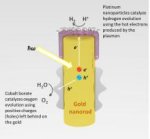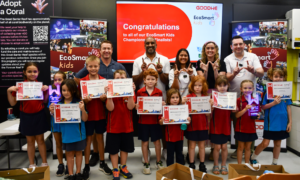Scientists from the University of Santa Barbara (UCSB) say they have developed a new way of harvesting solar energy using “forests” of golden nanorods instead of conventional photovoltaic materials.
The UCSB team have successfully demonstrated the technology, using the process to create enough solar power to separate hydrogen and oxygen atoms in water.
According to Martin Moskovits, professor of chemistry at UCSB’s Departments of Chemistry, Chemical Engineering, and Materials, the research is the “first radically new and potentially workable alternative to semiconductor-based solar conversion devices to be developed in the past 70 years or so.”
When photons in sunlight hit the surface of a silicon solar cell – the standard semiconducting material – photons travel through and “excite” the electron-rich side of the cell. It is the movement of these excited electrons leaving their positions which creates an electric current, which can then be used as power source.
The UCSB team found that by placing an array of gold nanorods, capped in titanium dioxide and platinum particles, in water, the nanorod forest absorbed light particles and caused a frenzy of electron activity.
“When nanostructures, such as nanorods, of certain metals are exposed to visible light, the conduction electrons of the metal can be caused to oscillate collectively, absorbing a great deal of the light,” said Moskovits. “This excitation is called a surface plasmon.”
As the electrons travel up the length of the nanorods, hydrogen atoms split from the water molecules and oxygen begins to pool at the base of the structure.
According to Moskovits, the experiment began producing hydrogen within two hours.
Despite the price of materials involved in his team’s method, and achieving what he calls only “respectable” efficiencies thus far, Moskovits says, “continued research will improve on the cost and efficiency of this new method –– and likely in far less time than it took for the semiconductor-based technology.”
Source/image source












































